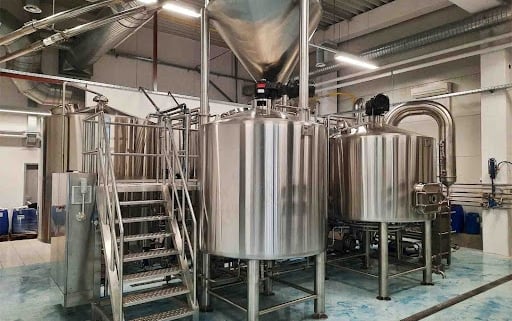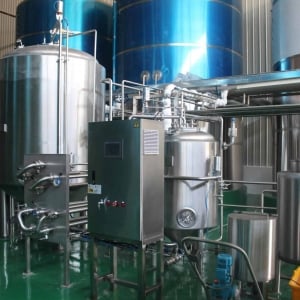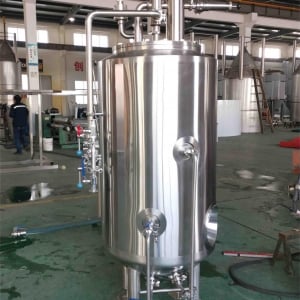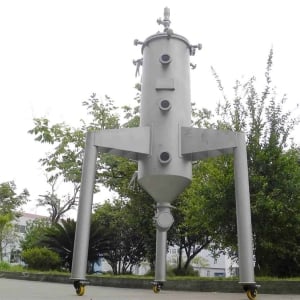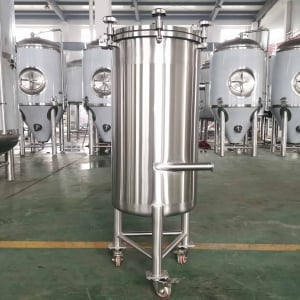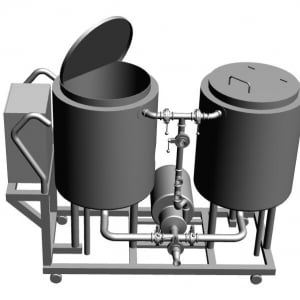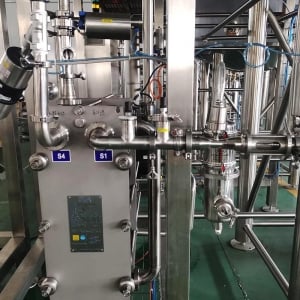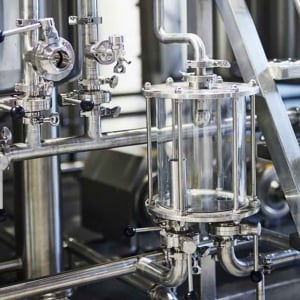Steel Conical Fermenters
Brewing is an art and a science, and fermentation plays a crucial role in transforming wort (unfermented beer) into the delicious beverage we all know and love. For homebrewers seeking to elevate their craft and produce crystal-clear, professional-tasting beers, a steel conical fermenter might be the missing piece of their brewing puzzle.
In this comprehensive guide, we’ll delve into the world of steel conical fermenters, exploring their features, benefits, functionalities, and how they can significantly enhance your homebrewing experience.
We’ll also provide crucial information on factors to consider when choosing a steel conical fermenter, including capacity, price range, suppliers, and factors to consider when selecting the right supplier for your needs. We’ll conclude with a frequently asked questions (FAQ) section to address any lingering questions you might have.
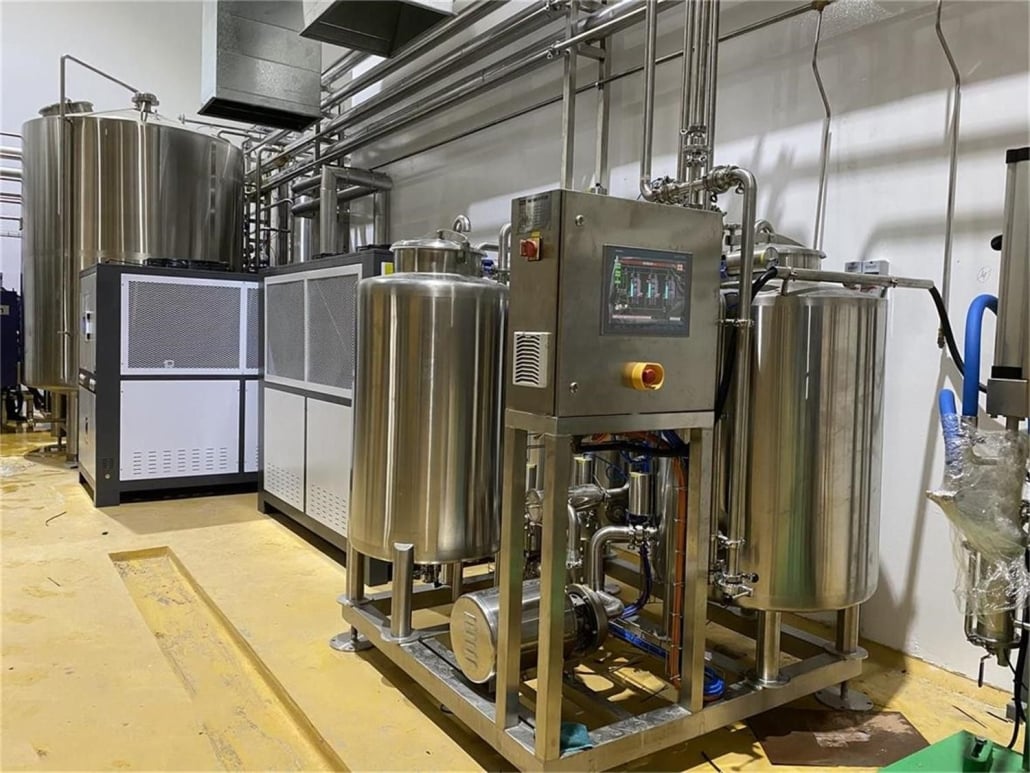
Steel Conical Fermenters: An Overview
Imagine a fermenter that not only looks sleek and professional but also boasts superior functionality. That’s the beauty of a steel conical fermenter. Unlike cylindrical fermenters, steel conical fermenters feature a cone-shaped bottom, resembling an inverted cone. This seemingly simple design innovation yields significant advantages during the fermentation process.
Benefits of Steel Conical Fermenters
Here’s a closer look at the key advantages of using a steel conical fermenter for homebrewing:
- Superior Sediment Collection: During fermentation, yeast produces sediment called trub. The conical bottom of the fermenter allows the trub to settle and collect at the lowest point, minimizing its contact with the beer. This leads to clearer beer with a more polished taste.
- Simplified Yeast Harvesting: For passionate homebrewers who love to re-pitch yeast for future batches, steel conical fermenters make yeast harvesting a breeze. The concentrated trub at the cone’s bottom facilitates easy extraction of healthy yeast for reuse.
- Efficient Dry Hopping: Dry hopping is a technique that adds aromatic hops to beer during fermentation for additional flavor and aroma. The conical design allows for better hop utilization, resulting in a more potent and expressive hop character in your finished beer.
- Closed-Transfer System Potential: Some steel conical fermenters can be outfitted with closed-transfer systems. This minimizes oxygen exposure during racking (transferring beer from the fermenter to another vessel) for a fresher-tasting beer with enhanced shelf life.
- Durability and Sanitation: Stainless steel is a superior material for fermenters due to its durability, resistance to corrosion, and ease of sanitation. Steel conical fermenters are built to last and can be easily cleaned between batches.
Steel Conical Fermenter Features
Now that we’ve explored the benefits of steel conical fermenters, let’s delve into some of the common features you might encounter:
| Feature | Description |
|---|---|
| Capacity | Steel conical fermenters come in a variety of sizes, typically ranging from 3 gallons to 40 gallons. The ideal size depends on your typical batch volume and brewing space. |
| Material | High-quality 304 stainless steel is the industry standard for steel conical fermenters. This food-grade material ensures safety and durability. |
| Jacketing | Some advanced steel conical fermenters feature jackets that allow for temperature control. This enables precise fermentation temperatures for specific beer styles. |
| Pressure Rating | Consider the pressure rating if you plan to carbonate your beer within the fermenter. Look for a fermenter rated to withstand the desired carbonation pressure. |
| Valves and Ports | A bottom drain valve facilitates easy yeast harvesting and transferring of finished beer. Look for additional ports for temperature probes, dry hopping, and pressure gauges depending on your needs. |
| Lid and Airlock | A secure-fitting lid equipped with an airlock allows for CO2 release during fermentation while preventing contaminants from entering. |
Steel Conical Fermenter Capacity and Design Considerations
Choosing the right steel conical fermenter for your needs involves careful consideration of several factors. Here’s a breakdown of key elements to ponder:
Capacity:
- Batch Size: Align the fermenter’s capacity with your typical batch size. Homebrewers who typically brew 5-gallon batches might opt for a 7.5-gallon fermenter to allow for headspace during fermentation.
- Available Space: Steel conical fermenters can have a larger footprint compared to cylindrical fermenters due to the cone shape. Measure your brewing space to ensure the fermenter will fit comfortably.
Design Considerations:
- Jacketing: Jackets enable precise temperature control, which can be particularly beneficial for lager beers and ale styles requiring specific fermentation temperatures. However, jacketed fermenters come at a higher cost compared to unjacketed models.
- Pressure Rating: If you plan to carbonate your beer within the fermenter, ensure the pressure rating can handle the desired carbonation pressure. For example, most standard beers require a pressure rating of around 2.5 PSI.
- Valves and Ports: Consider the number and placement of valves and ports based on your brewing practices. A bottom drain valve is essential, and additional ports for temperature control, dry hopping, and racking arms can enhance functionality.
Table: Steel Conical Fermenter Capacity and Design Options
| Feature | Description | Options to Consider |
|---|---|---|
| Capacity | Volume of liquid the fermenter can hold | 3 gallons – 40 gallons (Choose based on batch size and headspace needs) |
| Jacketing | Enables temperature control | Jacketed (For precise temperature control) vs Unjacketed (More affordable) |
| Pressure Rating | Maximum pressure the fermenter can withstand | Up to 2.5 PSI (for standard carbonation) |
| Valves & Ports | Bottom drain valve (essential), temperature probe port, dry hop port, racking arm port (Consider based on needs) |
Steel Conical Fermenter Suppliers and Price Range
Steel conical fermenters are an investment in your homebrewing experience. Here’s a glimpse into supplier options and price ranges to consider:
- Homebrew Shops: Local homebrew shops often carry a selection of steel conical fermenters from various brands. This allows you to see the fermenters firsthand and consult with knowledgeable staff for guidance. Prices generally range from $300 to $1000+ depending on size, features, and brand.
- Online Retailers: Several online retailers specialize in homebrewing equipment, offering a wider selection of steel conical fermenters at competitive prices. Be sure to factor in shipping costs when comparing prices online. Prices can range similarly to homebrew shops ($300-$1000+) depending on the same factors.
Table: Steel Conical Fermenter Suppliers and Price Range
| Supplier Type | Advantages | Disadvantages | Price Range |
|---|---|---|---|
| Local Homebrew Shops | See fermenters in person, expert advice | Limited selection | $300 – $1000+ |
| Online Retailers | Wider selection, competitive prices | Shipping costs | $300 – $1000+ |
Installation, Operation, and Maintenance
Once you’ve chosen your ideal steel conical fermenter, it’s time to set it up and brew! Here’s a basic overview of installation, operation, and maintenance:
Installation:
- Sanitize: Thoroughly sanitize all fermenter components before first use and between batches to prevent contamination. A no-rinse sanitizer is a convenient option for homebrewers.
- Assemble: Most steel conical fermenters require minimal assembly. Follow the manufacturer’s instructions to ensure proper assembly.
- Positioning: Place the fermenter on a stable surface that can support its weight when filled.
Operation:
- Transfer Wort: Once your wort (unfermented beer) has cooled, transfer it to the sanitized fermenter.
- Pitch Yeast: Add the appropriate amount of yeast at the recommended fermentation temperature.
- Attach Airlock: Secure the airlock to the fermenter lid to allow CO2 release and prevent contamination.
- Monitor Fermentation: Observe the airlock activity as an indication of fermentation progress. Once fermentation slows or stops, you can rack (transfer) the beer to a secondary fermenter or keg for conditioning and carbonation (if desired).
Maintenance:
- Cleaning: After each use, disassemble the fermenter and clean all components according to the manufacturer’s instructions. A thorough cleaning removes yeast residue and prevents bacteria growth that can contaminate future batches.
- Storage: When not in use, store the fermenter in a clean, dry place out of direct sunlight. Proper storage ensures your fermenter is ready for your next brewing adventure.
Choosing the Right Steel Conical Fermenter
With the plethora of steel conical fermenters available, selecting the right one for your needs can feel overwhelming. Here’s a helpful guide to consider:
- Batch Size and Frequency: Align the fermenter capacity with your typical batch size and brewing frequency. If you brew large batches frequently, a larger fermenter might be ideal. For smaller, occasional batches, a more compact fermenter might suffice.
- Available Space: Don’t forget to consider the fermenter’s footprint and height in relation to your brewing space. Will it fit comfortably underneath or around your existing equipment?
- Features and Budget: Steel conical fermenters come with a variety of features, such as jackets, multiple ports, and racking arms. Decide which features are essential for your brewing practices and prioritize them within your budget.
- Expandability: Consider future brewing aspirations. If you envision brewing larger batches down the line, a slightly larger fermenter might be a wise investment to avoid needing to upgrade sooner than later.
- Brand Reputation and Customer Reviews: Research different brands and read customer reviews to get a sense of quality, customer service, and warranty options.
Steel Conical Fermenters: Pros and Cons
Pros:
- Superior Sediment Collection: Leads to clearer, more professional-tasting beer.
- Simplified Yeast Harvesting: Facilitates easy extraction of healthy yeast for reuse.
- Efficient Dry Hopping: Enhances hop character and aroma in your beer.
- Closed-Transfer System Potential: Minimizes oxygen exposure for fresher-tasting beer.
- Durability and Sanitation: Stainless steel offers longevity and easy cleaning.
Cons:
- Higher Cost: Steel conical fermenters are generally more expensive than traditional carboys or buckets.
- Larger Footprint: The cone design can require more space compared to cylindrical fermenters.
- Learning Curve: Operating and cleaning a conical fermenter might have a slightly steeper learning curve for new brewers.
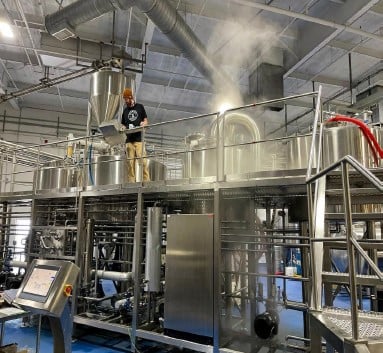
FAQ
Q: Are steel conical fermenters necessary for homebrewing?
A: No, steel conical fermenters are not necessary for homebrewing. You can produce good quality beer using carboys, buckets, or other fermentation vessels. However, steel conical fermenters offer significant advantages in terms of sediment collection, yeast harvesting, and potential for closed-transfer systems, which can elevate the quality and consistency of your homebrews.
Q: How do I clean a steel conical fermenter?
A: Most steel conical fermenters can be cleaned with a hot water and no-rinse sanitizer solution. Disassemble the fermenter as much as possible and thoroughly clean all components, paying close attention to areas where yeast and hop residue can accumulate. Some brewers like to use dedicated brewery wash products for an extra layer of cleaning power. Always consult the manufacturer’s instructions for specific cleaning recommendations.
Q: What is the difference between a jacketed and unjacketed steel conical fermenter?
A: Jacketed steel conical fermenters have a double wall construction with a space in between that can be filled with glycol or water for temperature control. This allows for precise fermentation temperatures, which can be crucial for certain beer styles. Unjacketed fermenters do not have this feature and rely on ambient temperature or external temperature control methods. Jacketed fermenters are generally more expensive than unjacketed models. For homebrewers who brew a variety of styles and prioritize precise temperature control, a jacketed fermenter might be a worthwhile investment. For those comfortable with managing fermentation temperatures through other methods, an unjacketed fermenter can be a cost-effective option.
Q: Where can I find recipes specifically designed for use with conical fermenters?
A: Many online brewing resources and homebrew forums offer recipes developed specifically for conical fermenters. These recipes often take advantage of the benefits of conical fermentation, such as easier yeast harvesting and closed-transfer capabilities. Additionally, brewing software programs like Brewmaster and Beersmith can be used to adapt existing beer recipes for use in conical fermenters.
Q: I am a new homebrewer. Is a steel conical fermenter a good investment for me?
A: Steel conical fermenters can be a fantastic investment for new homebrewers who are serious about taking their craft to the next level. While they do have a higher initial cost compared to carboys or buckets, the advantages in terms of beer clarity, yeast management, and potential for future upgrades can be significant. However, if you are just starting out and budget is a major concern, you can certainly brew great beer using more basic fermentation vessels. As you gain experience and confidence, a steel conical fermenter can be added to your brewing arsenal later on.
Conclusion
Steel conical fermenters represent a significant advancement in homebrewing technology. These versatile vessels offer numerous advantages for brewers seeking to produce crystal-clear, professional-tasting beers. By carefully considering your brewing needs, budget, and available space, you can choose the perfect steel conical fermenter to elevate your homebrewing experience and transform your passion into pint after pint of exceptional craft beer.

